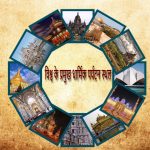Dargah Hazrat Nizamuddin Awliya : A place to connect with Spirituality

Its said that in Delhi that Nizamuddin Auliya is for all! People from all strands of life to find solace and peace of almighty visit the Nizamuddin Auliya Dargah situated near Sarai Kale Khan railway station. Hazrat Nizamuddin is the dargaah (mausoleum) of one of the most famous Sufi saints, Nizamuddin Auliya (1238 – 1325 CE). One can find the tombs of famous poet Amir Khusro, Mughal princess Jehan Ara Begum, and Inayat Khan inside the premises.

Dargah is sacred and pious to the sufi saint of the Chisti Order, Nizamuddin Auliya, who was born in 1238 in western Uttar Pradesh district Badayun. He come to Delhi to preach the Order of Chisti and then finally settled in Ghiyaspur. Hazrat Nizamuddin Auliya taught people that love and peace can help them get closer to the almighty; the lessons of humanity by Auliya was so precious. He said that one should keep on serving people irrespective of their cast, creed, and religion. He earned a lot of followers like Hazrat Nasiruddin Mahmud Chiragh Dehlavi and poet Amir Khusro. On 3rd April 1325, he passed away, and his Dargah was constructed by Muhammad Bin Tughlaq of the Tughlaq Dynasty, who was also his avid follower.

A street bustling with shops selling chadars, polychrome clocks and prints of Mecca and flowers leads to the Dargah Hazrat Nizamuddin. In the inlaid marble pavilion, one can see devotees singing qawwali in the honour of celebrated Persian poet and devotee of Nizamuddin Auliya – Amir Khusrau (1253-1325).
Dargah Hazret Nizamuddin Awliya(ra) in the heart of #India 's capital #NewDelhi a sacred space where always high regards n respect been maintained for Women by especially reserved holy space for prayers n meditation without any disturbance from large number of devotees daily vst pic.twitter.com/ZFhSGceuhn
— Haji Syed Salman Chishty (@sufimusafir) December 8, 2018
Women are not allowed to go beyond the outer verandah, but they can peek through jali ( lattice screen) to see the dark chamber where the grave of the great saint lies draped with chadar and rose petals. Locals say that tying a thread on the latticed screen serves as a constant reminder to the saint of their wishes. Apart from the main shrine, here, one can see the tomb of Nizamuddin Auliya’s saints – Jahanara Begum, Shah Jahan’s favorite daughter, and Amir Khusru.

Across the western side of the open courtyard, one can see the Jama’t Khana Mosque, which was built, was back in 1325 AD. Towards the north side of Dargah, there is a stepwell. Locals say that the stepwell was built in secret as the Tughluqabad was in making process, and all the building activities were banned. Successors of Nizamuddin Auliya made it with the help of water lit lamps. On the north-eastern side, there is a 16th-century tomb of Atgah Khan, who was a powerful minister in Emperor Akbar’s court. In the open marble pillar, Chaunsath Khamba (“64 pillars”), one can find the grave of Mirza Ghalib, preeminent Urdu, and Persian-language poet during the last years of the Mughal Empire. Other important tombs located in the NIzzamudin heritage area are the Lal-Mahal, Chini Ka Burj, Kalan-Masjid, Ataga Khan’s Tomb, Khan-I-Jahan Tilangani’s Tomb, Barapula, Chaunsath Khamba, and Khan-I-Khanan’s Tomb.
With Inputs from : https://www.tourmyindia.com









